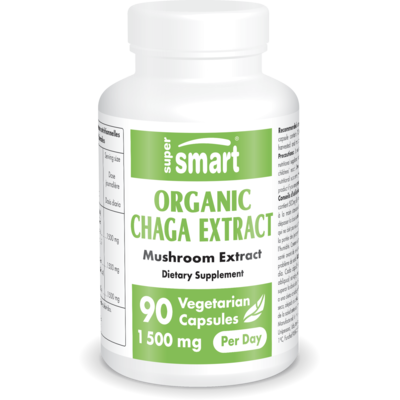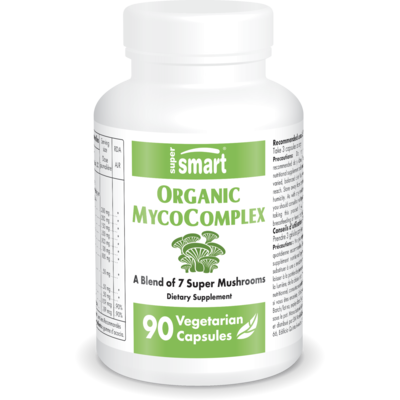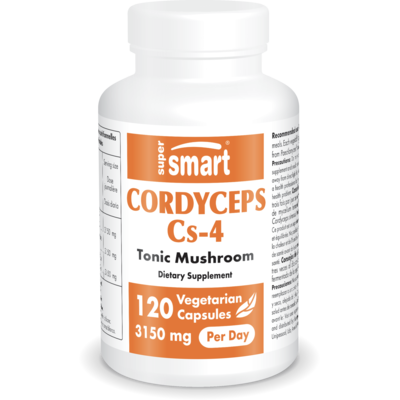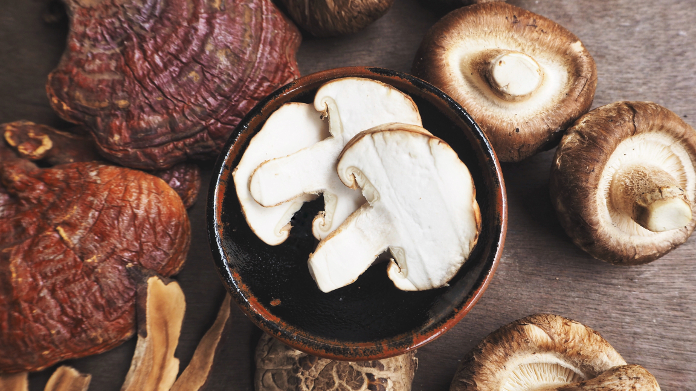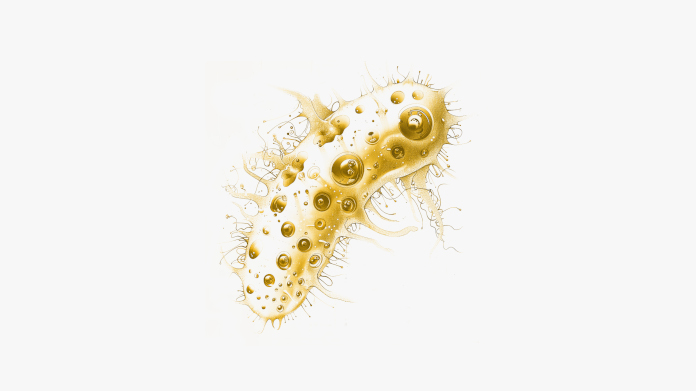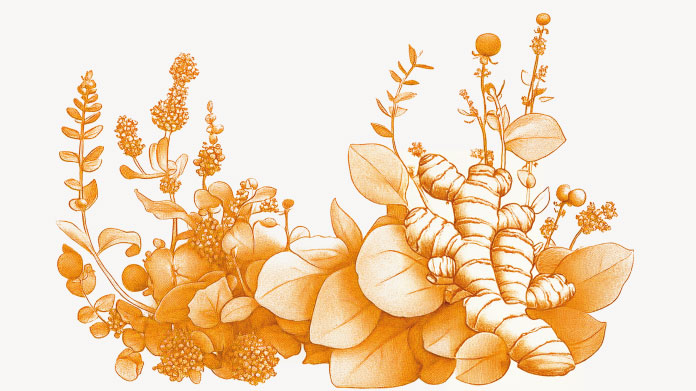Medicinal mushrooms: the triumphant return of a thousand-year-old heritage
Medicinal mushrooms, prized for their benefits for energy and immunity, are enjoying a tremendous revival. Discover the reasons for this success, from their age-old heritage to new scientific advances.

The impressive new boom in medicinal mushrooms
Medicinal mushrooms have played a central role in traditional medicine for thousands of years.
Chinese, Ayurvedic, Amerindian medicine... they have all made use of them.
These mushrooms, which have been appreciated for so long, are now enjoying a significant revival.
In 2024, the global medicinal mushroom market was valued at $67.69 billion and is expected to reach $182.34 billion by 2033, with a compound annual growth rate (CAGR) of 11.64% over this period.
By 2033, Asia-Pacific is expected to dominate the market (1).
Mycotherapy: driven by the appeal of natural remedies and innovation
This revival in mycotherapy can be explained by a number of factors, including:
- a craze for the well-being associated with natural and traditional products,
- an increasing number of scientific studies confirming the potential benefits of mushrooms traditionally used for therapeutic purposes, and
- biotechnological innovations, such as optimised cultivation on urban farms.
The success of mushrooms is also part of a wider trend in which they are increasingly used, not only for their medicinal properties, but also as sustainable alternatives in a variety of fields, ranging from biomaterials (mycelium leather, biodegradable packaging, etc.) to bioremediation for soil decontamination and meat substitutes derived from fungal fermentation.
As we shall see, certain varieties of medicinal mushrooms are currently enjoying great popularity.
The 4 leading medicinal mushrooms today
Reishi (Ganoderma lucidum): a support for immunity
Reishi (Ganoderma lucidum), sometimes known as the ‘mushroom of immortality’, is one of the oldest mushrooms used in traditional Chinese medicine.
It is attracting more interest than ever: the global market for reishi mushroom extracts alone is estimated to be worth no less than $6.86 billion in 2024 (over 10% of the global market for all medicinal mushrooms).
Rich in polysaccharides and triterpenes, reishi is reputed to support the immune system by promoting the activation of macrophages and lymphocytes.
It also contributes to the proper functioning of the circulatory system by improving vasodilatation and reducing platelet aggregation.
What's more, its active compounds help to reduce LDL ('bad') cholesterol levels by inhibiting its synthesis, promoting its elimination and limiting its oxidation (2).
This mushroom can be found in powder form or as an extract standardised in active ingredients (such as Reishi Extract, standardised to 20% polysaccharides and 6% triterpenes), or incorporated into drinks.
Chaga (Inonotus obliquus): a traditional tonic
Native to the cold regions of Russia, Canada and northern Europe, chaga (Inonotus obliquus) is sometimes nicknamed the ' forest diamond '.
Its popularity continues to grow, with the global market for chaga mushrooms estimated to be worth $1.04 billion in 2024.
This mushroom is renowned above all for its ability to support general vitality and for its wealth of potentially antioxidant active ingredients, such as polysaccharides and polyphenols (3).
Chaga is found in many natural preparations, particularly in extract form (such as Organic Chaga Extract, an organic chaga extract standardised to 30% polysaccharides).
Lion's Mane (Hericium erinaceus): at the heart of research into cognition
(Hericium erinaceus) is known as Lion's Mane in English or Hou tou gu in Chinese.
These different names refer to the fur-like appearance of its hanging white spines.
This unusual mushroom is currently generating a great deal of enthusiasm in the field of neuroscience, which is boosting its sales worldwide.
Its bioactive compounds, such as erinacins and pericenones, are the subject of numerous studies on memory and concentration (4).
Hericenones and erinacins are thought to promote the production of nerve growth factor (NGF), stimulating neurogenesis and brain plasticity.
Lion's Mane is already widely adopted in capsule or powder form in the field of mental well-being (as is the product Lion's Mane, an 8:1 Hericium erinaceus extract standardised in polysaccharides).
Cordyceps (Cordyceps sinensis): a favourite with sports enthusiasts
Cordyceps sinensis is a natural parasite that colonises the larvae of certain butterflies living at high altitude, particularly in the Himalayas and on Tibetan plateaux.
Once infected, the insect dies and the fungus emerges from its body.
In the past, this 'caterpillar mushroom' was extremely rare and was therefore reserved for the nobility and emperors in Chinese tradition, due to its possible energising and revitalising properties.
Cordyceps is still renowned today for its potential effects on energy, endurance, muscle recovery, the immune system and respiratory health, and is therefore particularly popular with sportspeople (5).
To avoid having to harvest this fungus from caterpillars, a cultivated strain designed to reproduce the benefits of wild Cordyceps sinensis has been developed in the laboratory: Cs-4.
Cs-4 is available in capsule form (like Cordyceps Cs-4, a nutritional supplement standardised to 7% cordycepic acid and 0.2% adenosine).
A growing interest in synergies between mushrooms
Finally, the development of the medicinal mushroom market also shows a strong trend towards the creation of formulas combining several species: reishi, chaga, shiitake, etc.
This approach makes it possible to maximise health benefits by combining the immunostimulant, energising or adaptogenic effects of several varieties of mushroom (this is the case with the synergistic Organic MycoComplex formula, which brings together 7 organic mushroom extracts with recognised virtues).
SUPERSMART ADVICE
References
- https://thewalrus.ca/the-mushroom-boom/
- Wachtel-Galor S, Yuen J, Buswell JA, et al. Ganoderma lucidum (Lingzhi or Reishi): A Medicinal Mushroom. In: Benzie IFF, Wachtel-Galor S, editors. Herbal Medicine: Biomolecular and Clinical Aspects. 2nd edition. Boca Raton (FL): CRC Press/Taylor & Francis; 2011. Chapter 9. Available from: https://www.ncbi.nlm.nih.gov/books/NBK92757/
- Lu Y, Jia Y, Xue Z, Li N, Liu J, Chen H. Recent Developments in Inonotus obliquus (Chaga mushroom) Polysaccharides: Isolation, Structural Characteristics, Biological Activities and Application. Polymers (Basel). 2021 Apr 29;13(9):1441. doi: 10.3390/polym13091441. PMID: 33947037; PMCID: PMC8124789. https://pmc.ncbi.nlm.nih.gov/articles/PMC8124789/
- Docherty S, Doughty FL, Smith EF. The Acute and Chronic Effects of Lion's Mane Mushroom Supplementation on Cognitive Function, Stress and Mood in Young Adults: A Double-Blind, Parallel Groups, Pilot Study. Nutrients. 2023 Nov 20;15(22):4842. doi: 10.3390/nu15224842. PMID: 38004235; PMCID: PMC10675414. https://pmc.ncbi.nlm.nih.gov/articles/PMC10675414/
- Lin B, Li S. Cordyceps as an Herbal Drug. In: Benzie IFF, Wachtel-Galor S, editors. Herbal Medicine: Biomolecular and Clinical Aspects. 2nd edition. Boca Raton (FL): CRC Press/Taylor & Francis; 2011. Chapter 5. Available from: https://www.ncbi.nlm.nih.gov/books/NBK92758/
22 Hours
Total Professionals
Total Professionals. Transactions always smooth.
Michael Brown
5 Days
excelente product
excelente product
SOSA Eduardo
8 Days
High Molecular Weight Hyaluronic Acid
This is my go to company for high molecular weight hyaluronic acid. Others either don't know or don't care to share the molecular weight of their product. I've been buying from SuperSmart USA for a long time and they offer consistent quality. A good company to work with as long as you can handle slightly longer shipping times.
Kathy
22 Days
Great quality product
Easy to order, great quality products and convenient delivery. Price is not the most cost effective but the quality is worth it.
Oliver Vanacore
24 Days
Shipping and receiving were great,
Shipping and receiving were great,
GEORGE Verne
27 Days
Excellent!!
Excellent service. Super-fast shipping. High quality unique products!!
SP
34 Days
Good Prices
Hi! I’m very happy with the variety of your products, your sales and your prices. My emails come in French but I can understand them for the most part.
Wendy
35 Days
Great products and service
Great products and service
WATSON Brian
37 Days
Items received in a short period of…
Items received in a short period of time.
Wai Kuen Lee
37 Days
Above and beyond,,,,Thank you
Above and beyond,,,,Thank you
DOMINIC
40 Days
Great product
Great product. Gre a t customer service
lorraine
41 Days
Quality product delivered on time as…
Quality product delivered on time as promised. Reasonably priced too!
JoeF
42 Days
A company that cares for their customers.
You have real people to help place orders when I have online difficulties. You are a caring company and genuinely concerned about your customers.
Arthur Nicholas
45 Days
Great experience
Very fast shipping
Heide Chavez
48 Days
Very satisfied!
Very satisfied!
CRUZ Francisco


